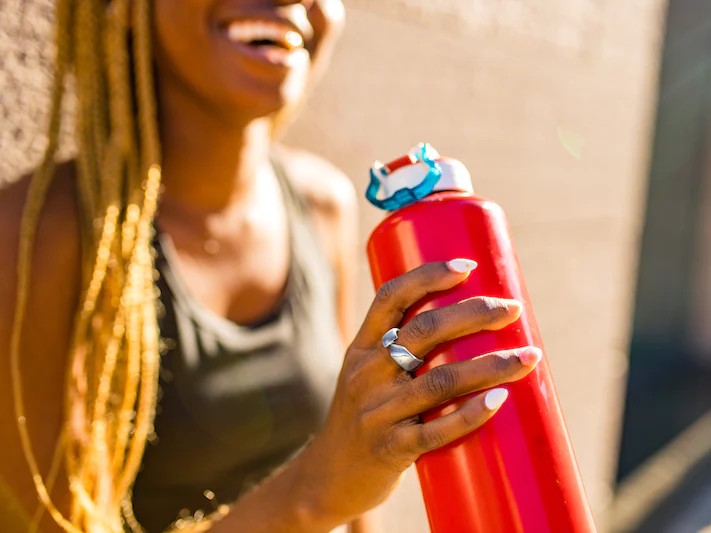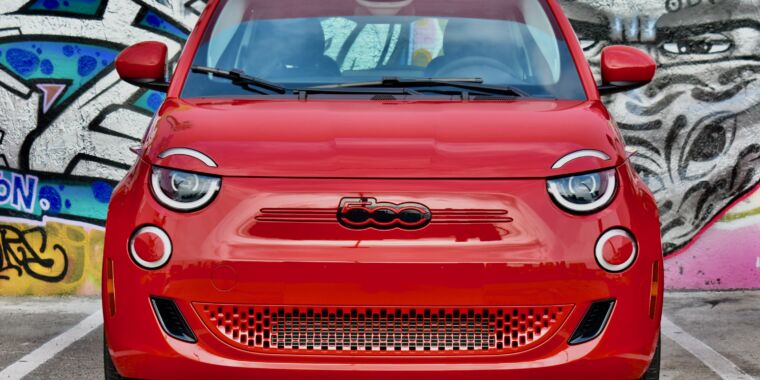This article is from The Spark, MIT Technology Review’s weekly climate newsletter. To receive it in your inbox every Wednesday, sign up here.
Ah, the holidays. Time for good food, quality moments with family, and hard questions about climate change … or is that last one just something that happens to me?
I’m a climate reporter, so at parties I’m often peppered with questions about my job, and more broadly about climate change and climate technology. Sometimes these questions can spark a heated conversation, and I have to admit, I often change the subject or sneak away for a cookie. But all these conversations have shown me that a lot of people have heard confusing things about climate change on cable news or the internet or from their friend in book club, and they want to know more.
With Thanksgiving and other big holidays coming up, you might find yourself in a similar position. So grab some green bean casserole (made with canned green beans, of course) and let’s dig into a few questions about climate technology that might come up.
Touchy Climate Topic #1: I’ve heard EVs are worse for the environment than regular cars—the power has to come from somewhere, after all.
In almost every case today, battery-powered vehicles produce fewer emissions than those with internal-combustion engines. The exact size of those differences does depend on where you are in the world, what is powering the electrical grid, and what sort of vehicle you’re driving in the first place.
Regional differences can be significant, as catalogued in a 2021 study from the International Council on Clean Transportation. In the US and Europe, an electric car will cut emissions by between 60% and 70% relative to a gas-powered one. In places like China and India, where the grid is powered by a higher fraction of fossil fuels like coal, the savings are lower—20% to 35% in India and 35% to 45% in China.
Vehicle size matters here too. If you really stack the deck, it’s true that some vehicles with batteries in them can wind up being worse for the planet than some vehicles with combustion engines. Take, for instance, the Hummer EV, a monstrosity that is responsible for 341 grams of carbon dioxide per mile driven. That’s more than a Toyota Corolla running on gasoline (269 grams), according to a 2022 analysis by Quartz research.
One crucial point to remember is that there’s a clear path for EVs to keep getting even better in the future. Batteries are getting more efficient. Recycling efforts are underway (more on this later). And grids around the world are seeing more power coming from low-carbon sources like wind, solar, hydro, and nuclear. That all adds up to EVs that will continue to get cleaner over time.
Touchy Climate Topic #2: What about all that mining for the materials that make clean tech? Isn’t that going to destroy the planet?
This one is tough, and there’s a lot of complexity when it comes to all the stuff (yes, that’s the technical term) that we need to address climate change. There are very real environmental and human rights issues around mining of all sorts.
We’ll need to mine a lot in order to build all the technology required to address climate change: about 43 million metric tons of minerals by 2040 in order to be on track for net-zero goals, according to the International Energy Agency.
The volume of mining is even higher if you take into account that some minerals are present in pretty low concentrations. Take copper, for example—a common material used for everything from transmission lines to EV batteries. Getting one ton of copper can require moving over 500 tons of rock, since sites mined today tend to have concentrations of copper below 1%.
However, even if you take into account all that waste rock, the energy transition is likely going to involve less mining than the fossil-fuel economy does today. The details will depend on how much recycling we can do, as well as how technologies evolve. If you want more details, I’d highly recommend this stellar analysis from Hannah Ritchie for a comparison.
Any mining can be harmful for the environment and for people living near mines. So it’s still worth paying careful attention to how these projects are progressing, and how we can lighten the burden of new technologies. But climate technology isn’t going to create a brand-new level of mining.
Touchy Climate Topic # 3: I heard they’re stacking wind turbine blades, solar panels, and EV batteries in landfills. Isn’t the waste from all this “clean” tech going to be a big problem?
Manufacturers are racing to get more clean energy technologies built and running, which means that in a few decades many will be reaching the end of their useful lives, and we’ll need to figure out what to do with them.
Take solar panels, for example. In 2050, we could see as much as 160 million metric tons of cumulative waste from solar panels. Sounds like a lot—and it is—but there’s a bigger problem. By then we’ll have generated a total of about 1.8 billion metric tons of e-waste, and plastic waste will top 12 billion metric tons. (For other comparisons, check out this Inside Climate News story, and the original article those numbers come from in Nature Physics.)
Overall, waste from climate tech is likely to be a facet of a much more substantial problem. Even so, there are still plenty of good reasons not to just throw old technology into the landfill. Many of the materials needed to make these items are expensive and could be reused to alleviate the need for more mining.
The good news is, widespread efforts are underway to recycle solar panels, lithium-ion batteries, and even wind turbine blades. So yes, there’s a waste problem looming, but there’s plenty of opportunity to address that now and in the future.
In the end, if you’re going to talk about climate tech at your holiday meal, remember that some people are more interested in fighting than in having a conversation, so it’s okay to just change the subject sometimes! If you’re looking for something else to talk about, I’d suggest you bring up the fact that crabs have evolved independently so many times there’s a word for the process. (It’s called carcinization.)
Enjoy your conversations about crabs and/or climate tech, and have some mashed potatoes for me!
Related reading
For more on EVs, and specifically the topic of hybrids, check out this story from last year. And for my somewhat conflicted defense of huge EVs, give this one a read.
On mining, I’d recommend this interview my colleague James Temple did with a Department of Energy official on the importance of critical minerals for clean energy. I’ll also point you to this newsletter I wrote earlier this year busting three myths about mining for clean energy.
And if you’re curious to read about recycling, here are recent stories I’ve written about recycling wind turbine blades, solar panels, and batteries.
Another thing
The power grid is getting more complicated, but AI might be able to help. AI could make the grid faster and more resilient in a range of ways, from allowing operators to make faster decisions to making EVs part of the solution. Check out the latest from my colleague June Kim for more!
Keeping up with climate
New York has purchased 30,000 heat pumps for public housing units. The appliances could help save energy, cut costs, and address climate change, and these and other trials will be key in finding units that work for renters, a common barrier for the technology. (The Verge)
In related news, the US Department of Energy just announced $169 million in federal funding for domestic heat pump manufacturing. (Wired)
→ This is how heat pumps work. (MIT Technology Review)
A $100 billion promise from nearly 15 years ago is still having effects on climate negotiations, including the upcoming UN climate talks. (Grist)
How to get more people into EVs? Pay them to turn in their old gas-guzzlers. New programs in Colorado, Vermont, and California are testing out the approach. (Bloomberg)
Pumping water up and down hills can be a cheap and effective way to store energy. But there’s a growing question about where the water for new storage projects will come from. (Inside Climate News)
Electricity supplies are changing around the world, and these charts reveal how. I loved the world map showing where fossil fuels are declining (the US, most of Europe, Japan) and where they’re still growing. (New York Times)
→ Here’s which countries are most responsible for climate change. (MIT Technology Review)
Eat Just, a maker of vegan eggs and lab-grown meat, is in a tricky financial spot. The company has faced lawsuits and difficulties paying its vendors on time, according to a new investigation. (Wired)
The country of Portugal produced more than enough renewable electricity to serve all its customers for six straight days earlier this fall. (Canary Media)
Note: This article have been indexed to our site. We do not claim legitimacy, ownership or copyright of any of the content above. To see the article at original source Click Here












